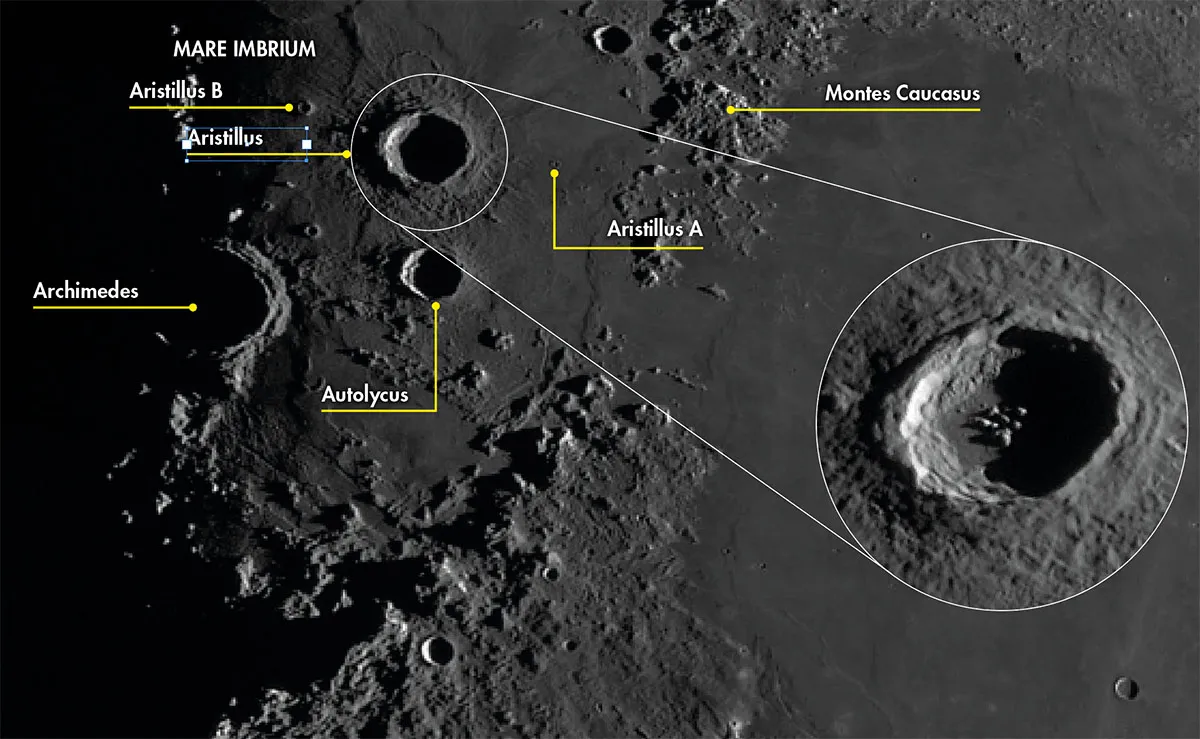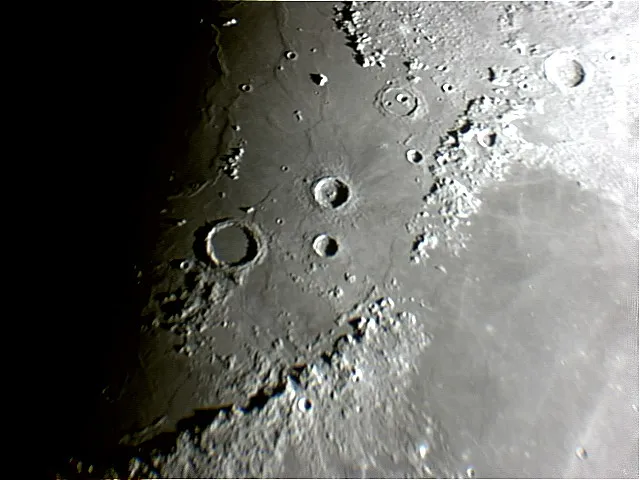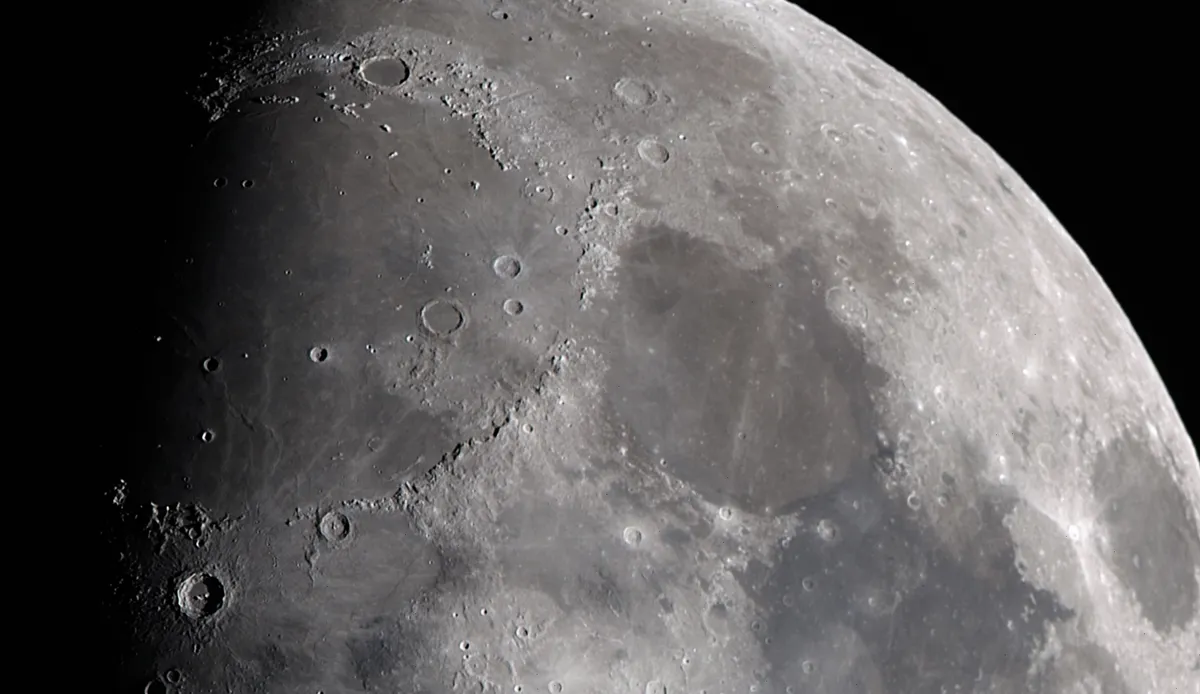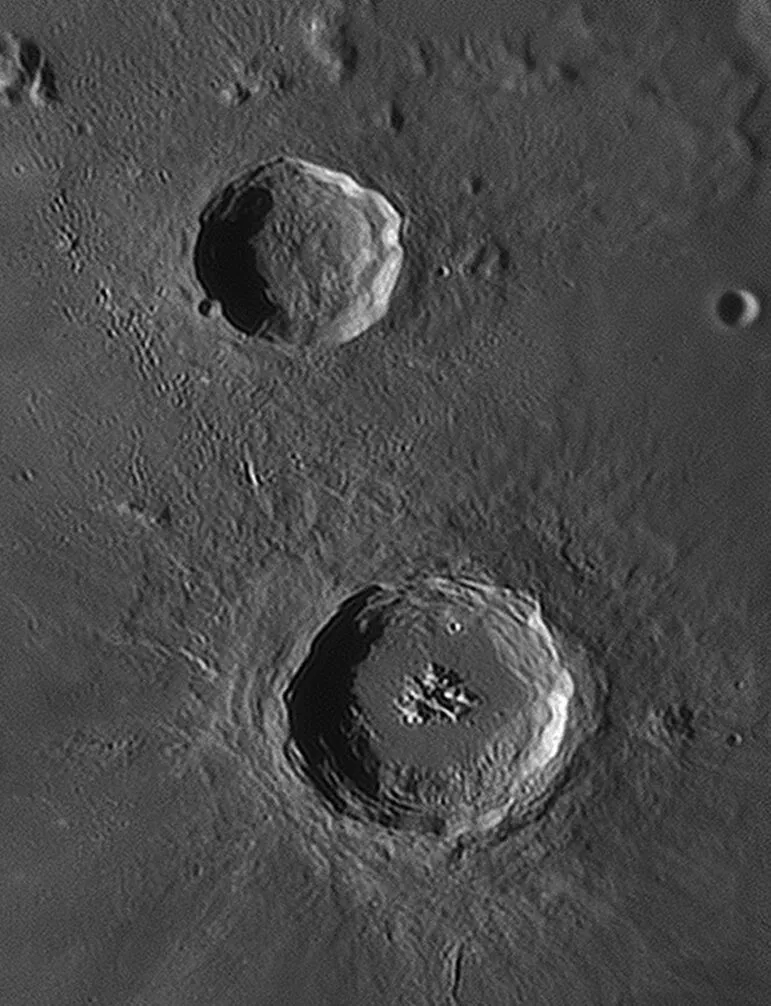Aristillus is a prominent 55km diameter crater located in the eastern part of Mare Imbrium. It lies 100km to the north of the 40km crater Autolycus and 184km northeast of the distinctive and dramatic walled plane of 83km Archimedes.
When light falls obliquely on Aristillus near sunrise or sunset, there is a wealth of detail to be seen.
For more info on lunar observing, read our guides on how to observe the Moon and the best features on the Moon.

Facts about Aristillus Crater
- Diameter: 55km
- Longitude/latitude: 1.2º east, 33.9º north
- Age: Up to 1.1 billion years old
- Best time to see: Six days after full Moon (7-8 June) or first quarter Moon (23-24 June)
- Minimum observing equipment: 2-inch refractor
A large ejecta blanket surrounds the sharp and terraced crater walls. Approximately 3.3km below, the crater’s relatively flat floor is punctuated by a number of impressive peaks.
These are prone to catching the early or late Sun’s rays, shining against the darkness of the crater’s inner shadowed floor almost like a small star cluster.
However, under more direct illumination, when the Sun is high in Aristillus’s sky, detail can be seen inside the crater itself.
The peaks appear highly clustered and arranged as if pointing to a common focus.
The relatively sharp delineation between the terraced rim and the smooth floor is blurred to the north where it looks as if some of the inner terrace has collapsed inward.

Larger instruments may also detect an anomaly crossing the eastern part of the rim: a dark line appears to emerge where the floor meets the rim, rising over the terraces to pass over the outer rim and down into the surrounding ejecta.
This feature is presumably the result of some dark material being thrown out during the point of impact.
Another interesting feature lies immediately north. Easier to see under oblique lighting, there appears to be the remains of a crater flooded with lava.
Although it has no official designation, the ghost crater is clearly visible when the Sun’s light is low in Aristillus’s sky.

Being a young formation, Aristillus has little evidence of erosion caused by subsequent bombardments; satellite craters are few and far between.
You have to look 80km to the east of the centre of Aristillus using a 4-inch scope to see 5km Aristillus A, roughly midway between Aristillus and the impressive Montes Caucasus mountain range.
Aristillus B is easier to see being 8km across but still lies some distance from Aristillus, located 82km to the west-northwest.

Aristillus is often paired with the equally youthful crater Autolycus to the south, partly because they lie on a north-south line from one another.
Consequently, when the terminator passes over Aristillus, it also passes over Autolycus.
The distinctive shadows that simultaneously form on the two craters thus present an exciting opportunity to compare and contrast the structural differences between the two features in detail.
Unlike Aristillus, 40km diameter Autolycus is less feature rich. Its rim rises above the surrounding lava and drops internally, with a notable step, to an uneven floor below.
The impressive peaks that decorate the centre of Aristillus are notably absent in Autolycus. Instead there’s only the weak impression of a central mound visible under oblique lighting.

